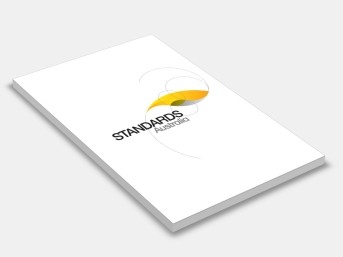AS 1720.1-1997 Timber structures, Part 1: Design methods
Standards Australia
Supersedes: AS 1720.1-1988 AMDT 1 Timber structures, Part 1: Design methods
Supersedes: AS 1720.1-1988 Timber structures (known as the SAA Timber Structures Code) - Design methods
Amended by: AS 1720.1-1997 AMDT 1 Timber structures (known as the SAA Timber Structures Code), Part 1: Design methods
Amended by: AS 1720.1-1997 AMDT 2 Timber structures, Part 1: Design methods
Amended by: AS 1720.1-1997 AMDT 3 Timber structures, Part 1: Design methods
Amended by: AS 1720.1-1997 AMDT 4 Timber structures, Part 1: Design methods
This Standard is the result of a consensus among representatives on the Joint Committee to produce it as an Australian Standard.
The objective of this Standard is to provide designers and manufacturers of timber structures with limit state design methods, design data and testing procedures for such structures.
This Standard is a ‘soft conversion’ of the working stress design (WSD) version to the limit state design (LSD) format. The term ‘soft conversion’ implies that average similar design solutions would be obtained from WSD and LSD codes. This approach was taken to ensure a smooth transition from WSD format to the LSD format. Hence only essential changes have been made to facilitate this conversion, and the contents of the LSD code remain substantially the same as the WSD code. New clauses and appendices have been added and the existing text has been thoroughly revised and updated to accommodate the conversion to LSD format.
Differences from the 1988 edition include the following:
(a) Conversion from WSD to LSD.
(b) Requirements for design data and details on drawings (Clauses 1.6.2, 1.6.3).
(c) The properties assigned to each strength group and F-grade multiplied by a factor to reflect the change to LSD.
(d) Joint types introduced for shear and withdrawal loadings.
(e) In-plane bending for plywood.
(f) Glulam grades, including characteristic strengths and elastic moduli.
(g) New Section on structural laminated veneer lumber.
(h) Section properties for plywood diaphragms.
(i) Guidance on appropriate deflection limits for various applications.
(j) Clauses on beam and column design and on curved and tapered members.
(k) Design properties for monitored, in-grade tested material.
(l) An appendix detailing the method for the assignment of capacity factors.
The terms ‘normative’ and ‘informative’ have been used in this Standard to define the application of the appendix to which they apply. A ‘normative’ appendix is an integral part of a Standard, whereas an ‘informative’ appendix is only for information and guidance.
First published as part of AS CA65-1972. Revised and redesignated AS 1720-1975. Revised and redesignated in part as AS 1720.1-1988. Second edition 1997.Contents:
Section 1: Scope And General
Section 2: Section 2 Design Properties Of Structural Timber Elements
Section 3: Design Capacity Of Basic Structural Members
Section 4: Design Capacity Of Joints In Timber Structures
Section 5: Plywood
Section 6: Round Timbers
Section 7: Glued-Laminated Timber Construction
Section 8: Structural Laminated Veneer Lumber
Appendix A: Referenced Documents
Appendix B: Guidelines For Serviceability
Appendix C: Joints In Timber Structures
Appendix D: Acceptance Testing Of Timber Structures And Elements
Appendix E: Further Design Methods For Members
Appendix F: Notation And Factors
Appendix G: Design Properties Of Structural Timber
Appendix H: Design With In-Grade Tested Material
Appendix I: Assignment Of Capacity Factor (Φ) To Design Properties
Appendix J: Buckling Strength Of Plywood Diaphragms
Timber Structures.
TM-010
